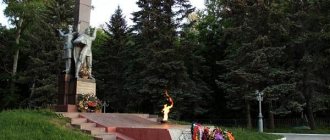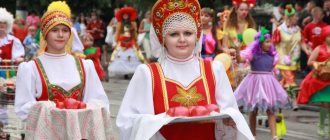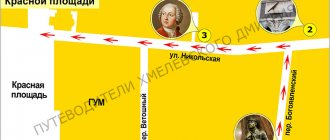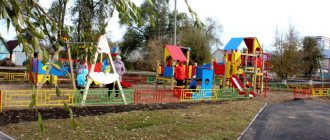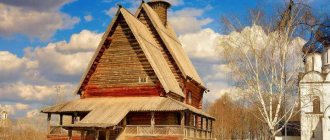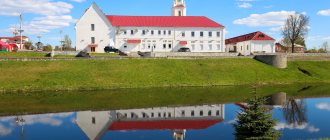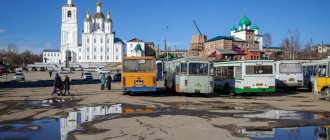| Is it worth going What to see on your own Cultural leisure Active recreation Where to go Stories, routes and tips from tourists Where to stay in Pyatigorsk Excursions |
Pyatigorsk is the oldest mud and balneological resort of all-Russian significance in the Caucasus. But at the same time, it is the industrial, scientific, cultural and tourist center of the Caucasian Mineral Waters, the largest city in the region in terms of territory and population.
Of the KMS group of resorts, the most diverse natural healing resources are concentrated in Pyatigorsk: over 40 mineral springs that differ in the chemical composition and temperature of the water, Lake Tambukan with medicinally valuable silt mud, and a favorable climate. Pyatigorsk is a city of two eras: on the one hand, the “Flower Garden”, galleries, gazebos and grottoes of the era of Lermontov and the “water society”, on the other, comfortable sanatoriums with entertainment complexes that correspond to modern ideas about health-improving recreation, cozy cafes, and gourmet restaurants.
Cultural and historical traditions have not been lost here; the city has something to interest not only holidaymakers who come for treatment, but also ordinary inquisitive tourists. It is not for nothing that, according to the latest data from the Russian service Tvil.ru, Pyatigorsk is among the top five resorts popular for winter recreation.
View of Pyatigorsk from Goryachaya Mountain Photo: © TIC Pyatigorsk
Is it worth going to Pyatigorsk in winter?
The best time to travel to the Caucasian Mineralnye Vody area, as you know, is spring and early autumn, but winter is not a reason to refuse to explore Pyatigorsk. This is an all-season resort, each season is interesting in its own way, and treatment here is comfortable at any time of the year. But you can not only take the procedures prescribed by doctors, but also see the sights, attend various events and, of course, go to nature.
Winter in Pyatigorsk is mild, but the weather is changeable, usually windy and damp, with ice and fog. Frosts are rare, but due to increased humidity and wind, as they usually write, the “comfort temperature” is much lower. The snow cover is unstable. If you want to catch snow, come in the second half of the calendar winter. The main thing is to dress for the season. Therefore, when planning a trip, check the weather forecast.
Weather in Pyatigorsk
Chinese gazebo on Goryachaya Mountain Photo: © TIC Pyatigorsk
What to see in Pyatigorsk in winter on your own
There are many attractions in Pyatigorsk; it is the largest of the resort towns of the Caucasian Mineral Waters, and winter is a special time to explore them. In winter, they try to lay out routes between attractions so that along the way you can warm up somewhere. We will also adhere to this rule.
It all depends on how long you come to Pyatigorsk. If you are vacationing in the neighboring resort towns of Kavminvod and you only have one day to explore the city, the following material will be useful for planning your trip:
Advice on what to see in Pyatigorsk in 1 day
If you come to Pyatigorsk for a longer period, for example, for a standard two-week course of treatment in sanatoriums, walking around the city during your free time from procedures can be divided into small routes: in winter it gets dark early, and the weather is not always conducive to long walks.
Route No. 1
the monument to M. Yu. Lermontov has stood since 1889 . This is the very first monument to the poet in Russia and one of the main attractions of Pyatigorsk.
Nearby is the Spassky Cathedral of Pyatigorsk, built and sacred in December 2012 on the site of a cathedral from the second half of the 19th century, blown up in 1936.
Tsvetnik Park is the oldest park in Pyatigorsk and for almost two centuries the center of resort life, a favorite place for relaxation and walks for local residents and guests of the city. This cozy corner was created in 1828, and the famous architects Bernardazzi brothers worked on its improvement. For the abundance of flower beds, the park was called the “Flower Garden”.
The park has been landscaped for decades, expanded, and decorated with new flower beds, fountains and gazebos. In 1907, according to the design of architect S.I. Gushchin, a wonderful airy building for the coffee shop of confectioner A.A. Gukasov was built. The monument to Kisa Vorobyaninov , a famous character in the film adaptation of the novel by Ilya Ilf and Yevgeny Petrov “12 Chairs”, filmed by Leonid Gaidai, was installed today.
The building of the Lermontov Gallery , opened to visitors in the spring of 1902, has survived to this day almost unchanged. Now it belongs to the State Philharmonic on the CMS; the gallery has a concert and exhibition hall. Once upon a time, many famous people performed here, including Chaliapin, Ermolova, Sobinov, Mayakovsky, M. Balakirev, etc. Keep an eye on the posters; many interesting concerts and exhibitions are taking place here and now.
Diana's Grotto is a cave artificially carved into the rock on the slope of Mount Goryachaya, decorated with columns of hewn stone. The grotto was built in 1831 by the Bernardazzi brothers, named after the goddess Diana, the patroness of hunting in ancient Roman mythology. The grotto is associated with M. Yu. Lermontov, who and his friends held a ball here a week before his death.
Mount Goryachaya is the ancestor of both the resort and the city of Pyatigorsk. Even in ancient times, the inhabitants of these places carved stone pools on its top, filled with freely flowing healing water. These pools were used by soldiers of the Constantinogorsk fortress at the end of the 18th century. Primitive baths were built on the mountain for the first resort visitors.
The sculpture “Eagle” was installed on Mount Goryachaya in 1903, to mark the 100th anniversary of the resort. It became the emblem of not only the Pyatigorsk resort, but also the entire Caucasian Mineral Waters region. The author of the sculpture embodied in stone a mountain legend about an eagle that was fatally stung by a snake and found relief from imminent death in a stream of healing water on Goryachaya Mountain.
The Chinese gazebo is so named because of its bizarre shape. The existing gazebo was installed in 1974, its author is sculptor I. F. Shakhovskaya. The gazebo offers a beautiful view of the city and the surrounding mountains.
Lermontov Gallery Photo: © RoKu
Route No. 2
This route starts from Ermolovsky Baths on the main street of Pyatigorsk - Kirov Avenue. Here, at the very beginning of the avenue, there are many interesting buildings built in the first half of the 19th century. For example, house No. 12a is called the “House of Princess Mary ,” and L.N. Tolstoy visited house No. 11a, which belonged to Dr. I.E. Drozdov.
The Ermolov baths were named in honor of General A.P. Ermolov in recognition of his services in the development of the resort business in the Kavminvody. A bathroom building with this name existed even when the resort was called Hot Waters - since 1820. Over the years, the first building fell into disrepair, and in 1880 the one that can be seen now was built.
Operetta theater, the building of which was built in 1915 for the Pyatigorsk All-Class Club, where the “water society” entertained.
The Pushkin Baths are an impressive complex of two buildings built in 1900–1901. Until 1930, the baths were called “Sabaneevskie”; their equipment was one of the best in Europe. A mineral spring was discovered at this site in 1825; the first building built on this site was called Sabaneevskie Baths, in honor of General I.V. Sabaneev, a participant in the War of 1812.
The Academic Gallery is one of the oldest drinking galleries in Pyatigorsk. It was built in 1847–1849 according to the design of the Kavminvod architect S.I. Upton. The academic gallery became an academic gallery in 1928 in memory of the 200th anniversary of the Academy of Sciences; before that it was “Elizabetinskaya” after the source, named so in 1811 by F. Haas, who discovered it.
Lermontov's grotto was made by the Bernardazzi brothers in 1829 during the arrangement of Emanuel Park. It is of natural origin; the small cave has only been slightly deepened. In 1860, the grotto began to be called Lermontovsky, as it was believed that from here M. Yu. Lermontov observed the “water society”. In “Princess Mary” this grotto is the meeting place between Pechorin and Vera.
The Aeolian Harp , a round gazebo with columns, was built in the early 1830s according to the design of the Bernardazzi brothers. A wooden case with two harps was built into the stone floor of the rotunda; the weather vane on the dome of the gazebo, turning under the influence of the wind, set the device in motion, touching the strings, and melodious sounds were heard. That is why the gazebo received the name “Aeolian Harp”. Nowadays the Aeolian harp is equipped with equipment that no longer depends on the wind.
Emanuel Park is the oldest park in the resort, founded by order of the Commander-in-Chief of the Caucasian Army, Lieutenant General Georgy Emanuel. The park was created in the classical English style from 1828 to 1830 according to the design of the architect Giuseppe Bernardazzi.
Ermolov baths Photo: © Anna Kudryavtseva
Route No. 3
Start your walk from the famous “Proval” by taking a minibus there, since everyone knows that going down the mountain is easier than going up it.
About the Gap in the story “Princess Mary” it is said: “According to local scientists, this failure is nothing more than an extinct crater; it is located on the Mashuk slope, a mile from the city. A narrow path between bushes and rocks leads to it...” In Lermontov’s time there was no tunnel to the underground lake; it was dug in 1858, and until 1880 people swam in the lake for medicinal purposes. On the wall is the image of Panteleimon the healer.
After taking a photo with Ostap Bender, the famous hero of the works of Ilf and Petrov, go down Gagarin Boulevard , which starts from Proval. There are many interesting buildings and dachas from the early 20th century. The Proval area began to be built up at the turn of the last century and was built with scope, brilliance, and perspective. Experts immediately assessed it as a “European resort of the 20th century.” Once upon a time, a tram ran here from Tsvetnik.
The Pirogov Baths building was built on the boulevard in 1914 to serve patients living in the new resort area of the city. An elegant building in Art Nouveau style, decorated with a turret and majolica panels depicting scenes of bathing and relaxation in ancient Roman baths. The baths were named after N.I. Pirogov in 1960 on the 150th anniversary of the birth of the outstanding doctor. His activities were connected with Pyatigorsk. It was here that he first used anesthesia (formerly called anesthesia) in military surgery.
The monument to Sergei Mikhalkov was opened in Pyatigorsk in March 2022. In this city he lived with his family from 1927 to 1930, graduated from school No. 1 named after. M.Yu. Lermontov, in which there is now an office-museum dedicated to the poet, published his first poem “The Road” here. S. V. Mikhalkov is an honorary citizen of Georgievsk and Pyatigorsk.
The Mikhailovskaya Gallery was built in Emanuel Park in 1848 by soldiers from the resort guard under the leadership and design of the architect Samuel Upton. In this gallery, since 1881, a memorial service was held for the murdered M. Yu. Lermontov and concerts were given in his memory.
Sculpture of Ostap Bender at the entrance to Proval Photo: © kvaky
But this is not all that the city has to offer to an inquisitive and not lazy tourist.
More information in the material: Sights of Pyatigorsk
Location on the map, description of the city
Pyatigorsk is located in the Stavropol Territory in the foothills of the Greater Caucasus. The territory is crossed by the Podmuk and Kuma rivers, as well as tributaries, and there are several mountain peaks.
After the end of the Russian-Turkish War, Catherine the Great issued an order to begin the construction of fortresses in new territories to protect the borders. In 1780, the Konstantinogorsk fortress was built, named after the newborn grandson of the empress.
After 1803, the settlement actively developed, and the KMS was given national significance. In the same century, General Ermolov, the first governor of the Caucasus, began to build fortresses to protect himself from numerous raids.
General Ermolov's successor renamed the city, and the name did not change further. Emmanuel Park is named after him. In the next century, hotels, sanatoriums, and boarding houses began to appear.
Pyatigorsk is famous for its variety of mineral springs, the waters of which are used to treat many diseases.
Cultural leisure
When planning a visit to Pyatigorsk in winter, be sure to include cultural institutions in your routes, where you can not only get aesthetic pleasure, but also relax and warm up after walking along the winter streets.
Museums
There is more than one museum in Pyatigorsk, so you will have the opportunity to choose what is most interesting. The most popular museum in the city is, of course, the M. Yu. Lermontov Museum-Reserve , opened more than a hundred years ago in the house where the poet spent the last two months of his life and wrote a number of poems. The interior of the house was recreated according to the memories of contemporaries, but there are also things that M. Yu. Lermontov used during his life.
If you are interested in the natural features of the Caucasian Mineral Waters region and the pages of the history of Pyatigorsk, visit the Pyatigorsk Museum of Local Lore , one of the oldest museums in the region. This museum will also be of interest to art lovers, as it includes a Hall of Fine Arts, where rotating exhibitions from the museum’s funds, third-party organizations and private collections are held.
If you are interested in the latest multimedia technologies, we recommend visiting the new museum of Pyatigorsk - “Russia - My History” , opened for the 240th anniversary of the city in September 2020, one of the largest in the country. There are more than a thousand units of multimedia equipment, and the techniques of video infographics, animation, three-dimensional modeling and digital reconstructions have been introduced. The exhibition of the complex has four sections: “Rurikovich”, “Romanovs”, “From great upheavals to the Great Victory. 1914–1945" and "Russia is my history. 1945 - present." A visit to the museum will be especially interesting and useful for schoolchildren, because such museums are not found in every city.
More information in the special material Museums of Pyatigorsk
Museum “Russia - My History” Photo: © Instagram of the complex
Theaters
The main theater of Pyatigorsk, of course, is the Operetta Theater , beloved by local residents and vacationers. Its repertoire includes performances for adults and musical fairy tales for children; for many years now they have been bringing holidaymakers from neighboring towns of the Caucasian Mineralnye Vody to them. The basis of the repertoire consists of works by classics of the genre, time-tested, but still attracting full houses.
You may also be interested in the chamber drama theater "Close-up" . This is a very young theater, but it has already won recognition from the audience. In its repertoire of classics and productions of modern works, you will be able to see even already well-known works from a new perspective.
If you come to the city with a child, you can visit the children's puppet theater "Golden Key" , which is located in a historical building on Kirova Avenue. The whole family can watch the wonderful performances of this theater.
Operetta Theater Photo: © miljkovic14
Pyatigorsk souvenirs
In addition to magnets and postcards with mountain landscapes and local attractions, they bring from Pyatigorsk:
- drinking stations and mineral water;
- knitted items made from sheep wool;
- cosmetics with Tambukan mud;
Treat yourself to cosmetics with Tambukan mud.
- tea from mountain herbs, mountain honey and jam;
- Balkar ayran;
- horse meat and lamb sausage, sujuk and suluguni.
Souvenirs are sold in shops on Kirov Avenue and in shopping centers. For example, in “Vershina Plaza” on the street. Essentukskaya, 31-A or in the City Mall on the street. Ermolova 14. Local delicacies and handicrafts - at the Upper Market on the street. Levanevsky, 3.
Leisure
The main winter entertainment for everyone who loves active recreation is, of course, skiing and ice skating. Even if it’s warm outside, there are skating rinks in Pyatigorsk where you can spend time with family or friends. ice arena Royal Ice , protected from precipitation and wind, operates An outdoor ice rink operates annually in the Kirov Park . No matter what the temperature is outside, reliable refrigeration equipment ensures trouble-free existence of natural ice even at +15°C.
To ski and snowboard from Pyatigorsk you will have to go to ski resorts. All of them are located at least three hours from the city. Within the city limits and on the mountain slopes in the forest, if there is snow in Pyatigorsk, only children can ride.
Health paths
Let’s not forget about the wonderful health paths of Pyatigorsk; here, during walks, a person is simultaneously influenced by the climate and the surrounding nature. Three health path routes with a total length of 31.4 km have been developed, which differ in the degree of physical activity. The peculiarity of the Pyatigorsk health paths is that they are not only therapeutic, but also educational. All routes start at source No. 1, where there is also a board with information and route diagrams.
Routes No. 1 and No. 2, 9,600 meters long, differ only in the direction of movement and the descent from the mountain or ascent along the route. They pass by the cascading fountain, the Mikhailovskaya Gallery, “Proval”, then along the ring road around Mount Mashuk past the Komsomolskaya Glade, the monument to the victims of fascism, the site of the duel of M.Yu. Lermontov.
Route No. 3, 10,800 meters long, partially follows route No. 2, and then, past the Forester’s House, it turns to the observation deck on the top of Mount Mashuk, from where a magnificent panorama of the city and the Caucasus Mountains opens up. of a cable car to climb the mountain , and descend from the mountain along the path path.
All routes of health paths are plotted on the map of Pyatigorsk in the 2GIS program.
View of the city from Mount Mashuk Photo: © OlegB
If time is short?
If time is short, there are 2 options:
- Use an electric car with an audio guide
- Reduce the program to the essentials
Electric cars run on one of 3 routes:
- Flower garden - Failure. 40 minutes, 350/150 rub.
- Lermontov places. 1 hour, 500/250 rub.
- Comprehensive: both excursions at once. 1.5 hours, 700/400 rub.
Not a bad option to save time and effort.
Otherwise, it is better for you to shorten the route and leave the Lermontov Museum, the Ropeway and the failure alone. You can stroll through the central historical part of the city, going up to the Aeolian Harp and the Academic Gallery.
This is a good half-day walking route.
Below I will give a brief description of all the objects that you definitely need to see along the way. We will also take into account logistics and interesting features of the road.
We will list them according to the route with the balloon. We walk around clockwise.
Where to go
From Pyatigorsk you can independently go for a walk to any of the neighboring resort towns.
The closest neighbor of Pyatigorsk is Essentuki , you can get here in just 17 minutes by regular train and in 11 minutes by high-speed Lastochka.
If you want to learn more about Essentuki, see the most famous sanatoriums and pre-revolutionary mansions, such as Zimin's Dacha "Eagle's Nest" , walk from the station along Andzhievsky Street. Along the way, check out the Church of St. Panteleimon , built a hundred years later on the site of a demolished temple from the late 19th century. Approach one of the most beautiful buildings of the resort - the Semashko Mud Baths , made in the style of ancient Roman baths. Architecture lovers should pay attention to the following sanatorium buildings:
- Sanatorium "Istok" built at the beginning of the 20th century.
- The historical administrative building of the Moscow sanatorium.
- Building No. 2 of the Rossiya sanatorium, built in 1903, is one of the oldest buildings in the resort.
- One of the most modern hotels in Essentuki is the Pontos Plaza hotel in Art Nouveau style, opened in 2012.
Enter the main alley of the Resort Park through the entrance along Razumovsky Street. The park contains many city attractions: the Oreanda gazebo , Gallery of Source No. 17 , the half-timbered building of the Tsander Institute of Mechanical Therapy , a flower clock with a beautiful gazebo, a sculpture of an eagle - the emblem of all resort towns of the KMS, and much more. Try the water in the gallery of source No. 4 , the most popular water of Essentuki, and climb the stairs to the Upper Park to the building of the Nikolaev Baths , which have been operating since 1898. The dormitory building of the “Healing Key” sanatorium is also worthy of attention; the first comfortable hotel in Essentuki, “Kompaneyskaya”, was opened in this building in 1875.
Along the cascade stairs, where fountains operate in the warm season, through the Main Entrance to the park, exit to Teatralnaya Square , the main square of the city, where the Concert Hall is located. F. I. Shalyapin . The square is popular with vacationers; in the summer there is a very interesting singing fountain .
More information in the general Guide to Essentuki Reviews of tourists about a trip to Essentuki
Mud bath named after. ON THE. Semashko in Essentuki Photo: © Anna Kudryavtseva
The most popular resort city of the Caucasian Mineralnye Vody is, of course, Kislovodsk . The train will get you here from Pyatigorsk in fifty minutes, and the high-speed Lastochka is even faster. Attractions in the city of Kislovodsk begin immediately from the Railway Station , which was built in 1854 along with a railway line connecting Mineralnye Vody with resort towns. Don't miss the building of the State Philharmonic named after V.I. Safronov , the former Kursaal. Once upon a time, the resort audience, who arrived on commuter trains from neighboring cities, listened here to Fyodor Chaliapin, Leonid Sobinov and other famous artists. You might be interested in the poster, because coming here to a concert from Pyatigorsk is not at all difficult.
Go to the main tourist street of Kislovodsk - Kurortny Boulevard . Even though its beautiful flower beds are now empty and the light and music fountain is not working, there are many architectural sights of Kislovodsk, restaurants, cafes and souvenir shops here. Pay attention to the magnificent building of the Main Narzan Baths , go to the Narzan Gallery , where the resort public has been drinking from the Narzan pump rooms for more than a century and a half. Try the famous Narzan of Kislovodsk. I wonder which one you like better, sulfate or dolomite, hot or cold?
Be sure to leave time for a walk through the Resort Park of Kislovodsk. Enter the park through the Main Entrance Colonnade , walk along the main alley past the Flower Calendar , the monument to A.S. Pushkin, the Glass Stream to the Ladies' Whim bridge , go up to the Red Stones rocks and exit the park along the Cascade Staircase " . If you have enough time, you can climb to the highest point of the park, Mount Small Sedlo , using the services of a cable car . the “Valley of Roses” , Blue Stones and the panorama of Kislovodsk from above
To plan your trip you may find it useful:
Advice What to see in Kislovodsk in 1 day Reviews of tourists about a trip to Kislovodsk
New Year's Resort Boulevard of Kislovodsk Photo: © 296Olga
Family city tours: location, cost
You don’t have to travel on your own; you can take a tour with a professional guide.
The article presents the most popular ones (for all of them you need to book tickets in advance):
- Sightseeing tour. It usually takes about 3 hours, but does not cover all the sights. The cost of one ticket is 400 rubles. Planting takes place in the following places: sanatorium “Rodnik”, sanatorium “Tarkhany”, entrance to the park “Tsvetnik”.
- For lovers of the humanities, and literature in general, offer an excursion “Literary Pyatigorsk”. Tourists will get acquainted with the life of famous poets (Pushkin, Lermontov, Leo Tolstoy and others) and some Decembrists (Odoevsky, Bestuzhev-Marlinsky and so on). This is a walking tour lasting 3 hours. The cost per person is 300 rubles.
- 2 monasteries: Second Athos Monastery and St. George Convent.” The first monastery has already been mentioned above. The convent is located near the city of Essentuki. The excursion takes 4 hours, cost – 650 rubles.
Stories, routes and tourist tips
Perhaps real reviews from tourists will be useful to you when planning your trip, no matter what time of year they visited the city. Often it is such reviews or stories from local residents that suggest unusual ideas, unusual places and help create interesting routes.
We advise you to study the general Guide to Pyatigorsk , where there is a lot of useful information: not only the city’s attractions are described, but also the public transport system, there is information on the best places for shopping, places where you can have a snack on the go or have a delicious lunch.
We will tell you not only what you can see and do, but also what you can bring from Pyatigorsk as a gift to your family and friends or as a souvenir to friends or work colleagues.
What to bring from Pyatigorsk
We recommend that you read the reviews of our Tourists:
- A story about a recent trip to the Caucasus from Tatiana “Vacation in the Caucasian Mineral Waters region. Pyatigorsk" and from Anastasia "The Caucasus before me or Vacation in the era of a pandemic"
- A story about the sights of the city from Anna “The Cities of Kavminvod - Pyatigorsk”
- A story about a January trip to Pyatigorsk from tourist miljkovic14
All tourist reviews about the trip to Pyatigorsk on Turister.Ru
Do you know that the site has a “Questions and Answers” ? It exists precisely so that you can, if necessary, check with experts for up-to-date information about attractions or get advice on issues that interest you regarding your planned trip to Pyatigorsk.
The eagle is a symbol of the Caucasian Mineral Waters Photo: © Gennady Sopin
Where to stay in Pyatigorsk
Pyatigorsk is a large resort city offering guests different types of accommodation. There are several sanatoriums offering healing with medicinal waters, hundreds of 3-4 star hotels and even more guest houses with apartments for those who appreciate home comfort.
It is convenient for an inquisitive traveler to choose accommodation in the historical center of Pyatigorsk, where all the main attractions are located, revealing it as a resort. It is located in the eastern part of the city at the foot of Mount Mashuk.
- Pyatigorsk Hotels
- Hostels for Budget Travelers
- Flats and apartments
- Guest houses in Pyatigorsk
Saving on travel by booking accommodation on Booking.com with cashback is not only pleasant, but also useful for new holiday opportunities. Cashback promotion on Tourist. RU
Photo: © Tatyana Kvichanskaya
